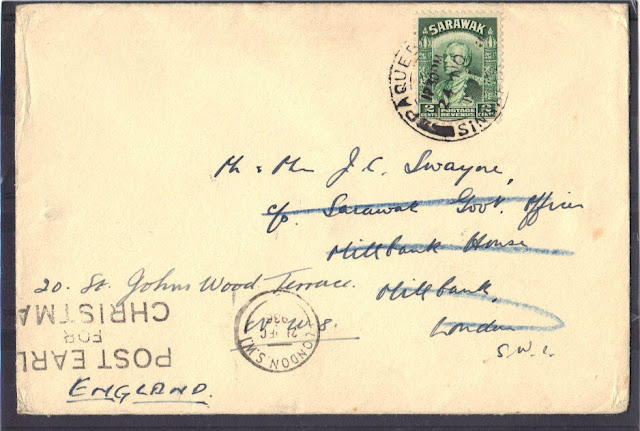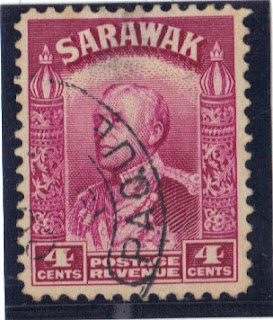Ship letters or the more accurate term is consignee's letters were carried on ships mainly of the Sarawak Steamship company plying the route to Singapore. The following quote from the Sarawak handbook by Forrrester-Wood would explain the process involved:
"any person shipping goods can hand to the master of the ship documents concerning his consignment. Nothing may be enclosed in the cover other than invoices, bills of lading or similar papers".
Strictly speaking, these covers should be clearly endorsed 'Consignee's letter', but this rule does not seem to be observed.
The M V Giang Lee was one of three ships operated by the operated by the Heap Eng Mo Steamship Co. This was a company based in Singapore. The Giang Lee was built in Hong Kong in 1958 and was 576 feet long makes regular runs between Kuching, Sarikei, Binatang, Sibu and Singapore. The vessel carries general cargo and timber and was registered in Singapore.
The S S Darvel was built on the east coast of Scotland by the Caledon Ship Building Co. at Dundee in 1924, designed specifically for the Singapore-Sarawak-North Borneo/Sabah service. This Straits Steamship Company vessel operated a twice weekly service.
On 11th February 1929 the ship ran aground on a sandbank at Sandakan. As this occurred on a very high tide it was not until two months later when it could be re-floated. The weekly service was maintained throughout the 1930s until the WWII. It served with distinction as a troop and supply ship and almost got sunk. After the war it resumed its previous role. It was the first coastal ship to be operated by a merchant company in Borneo after the withdrawal of the Australian forces. The ship mark was mainly used in the 1950s. It was eventually scrapped in 1960.
The S S Belaga was one of the ships of the Sarawak Steampship Company. It was originally named the S S Empire Palace until 1949 and was built in 1945 by William Hamilton of Port Glasgow. The ship was used on the Rejang river until 1958 when she was sold on to other operators. She was finally scrapped in 1971. There are two known cancellations for S S Belaga but only the ones used in the few years postwar were not philatelic.
The M V Bruas was another vessel of the Sarawak Steamship Company. It was serving the route between Sibu and Singapore. However, there is evidence that the above cover and ones similar to it bearing the same 1952 8c stamp were purely philatelic and had never fulfilled a postal purpose.
TPO2 was known to serve Simunjan in the 1960s. 15c was probably the rate for local letters. There is and was no public railway system in Sarawak. The travelling post offices made use of vans or more likely, 4 wheel drive vehicles which were more suitable to the terrain.
This should be the last of the transport related material from Sarawak that I can show for the time being. Next week, we shall look at some stuff on the same theme from Brunei.































.jpg)
.jpg)












